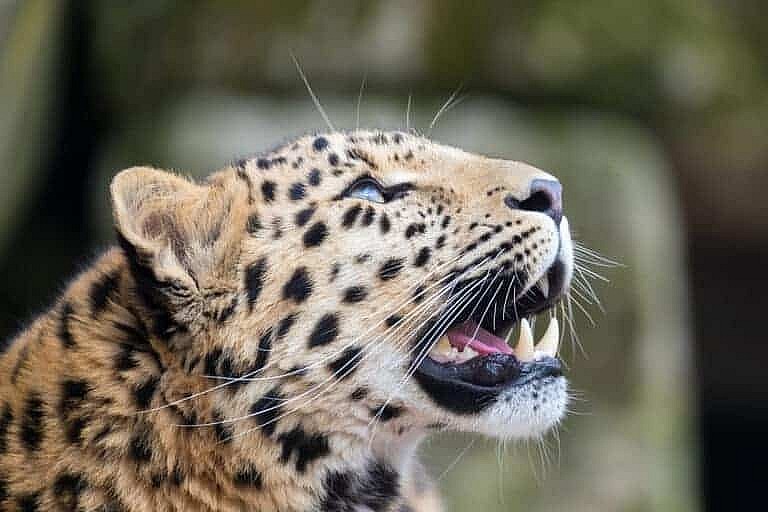Top 12 Rarest Animals on Earth - Brink of Extinction
 |
| Top 12 Rarest Animals On Earth |
For most humans, it is almost impossible to come across certain animals in the wild since they are so elusive and rare. These are 12 of the world's rarest animals.
1. Northern White Rhinoceros (Population: 2 Individuals)
The rarest animal on the planet is the Northern White Rhino. With only two females left at the Ol Pejeta Conservancy in Kenya, it is critically endangered. The species suffered a great loss in 2018 with the passing of the last male. The main causes of their decrease are habitat loss and poaching for their horns. Modern reproductive technologies, such as in vitro fertilization that uses genetic material from deceased men, are now essential to conservation efforts. The dire situation of the Northern White Rhino serves as both a sobering warning about the effects of human greed and a catalyst for action to save other threatened animals.
READ MORE: Top 13 Rarest Diseases In The World You Should Know
2. Vaquita (Ten Individuals)
 |
With less than ten surviving, the vaquita, a tiny porpoise located in the Gulf of California, is critically endangered. The bycatch of this marine mammal in illicit gillnets is putting it in danger of going extinct.
3. Hainan Gibbon (fewer than thirty)
On the Chinese island of Hainan, there is a little woodland where the Hainan Gibbon lives. It is the rarest primate in the world. This species is in danger of going extinct due to poaching and deforestation. Hainan gibbons are gregarious creatures that consume fruits, leaves, and insects while living in tiny family groups. In order to increase their living area and guarantee their existence, conservation efforts are mostly concentrated on protecting and reforesting their habitats.
4. Sumatran rhinos (40 Individuals)
 |
The number of Sumatran orangutans is estimated to be 14,000, making them extremely endangered. One of their main threats to survival is the degradation of habitat brought about by palm oil plants.
5. Rhinos of Java (70 Individuals)
There are less than 75 Javan rhinos remaining in Indonesia's Ujung Kulon National Park, making it one of the rarest big mammals. Poaching and habitat loss have driven this species to the brink of extinction.
6. Amur leopards (84 Individuals)
 |
The rare Amur Leopard is in danger of going extinct in the temperate forests of China and the Russian Far East. The main dangers to them are habitat loss, poaching, and lack of prey. These lone predators are well-suited to their chilly surroundings because to their stunning speckled coat. It moves more easily in the snow thanks to its big paws and thick fur. They eat rabbits, deer, and badgers. Protected area creation, anti-poaching patrols, and habitat restoration are all part of the Amur Leopard's conservation efforts. The Amur Leopard's ability to bounce back from hardships gives it hope for the future.
7. Gorilla Cross River (200–300)
The rarest great ape in Africa is the Cross River Gorilla. It lives in the rough terrain and deep forests that border Cameroon and Nigeria. Because of hunting and habitat damage, they are seriously endangered. The fruit, leaves, and stems that these gorillas eat make up their diverse diet. Protection of habitat, enforcement of anti-poaching laws, and community-based conservation initiatives are the main focuses of conservation activities. Although it has been challenging to study the Cross River Gorillas due to their reclusive character, attempts are still being made to preserve their survival.
READ MORE: What are the Rarest Elements On Earth - Top 11
8. SAOLA (750 or less)
 |
Population estimates for the Saola, often called the Asian Unicorn, are difficult to determine because to its extreme elusiveness. This type of cow, which was found in 1992 near the border between Vietnam and Laos, is more at home in the thick forests of the Annamite Range. The degradation of their habitat and accidental capture in snares meant for other animals pose a threat to them. The Saola's primary food source is the leafy plants that grow in its natural woodland. Snare removal and habitat protection are two aspects of conservation initiatives. One of the world's most enigmatic animals is still the Saola.
9. Orangutan Tapanuli (800)
The most endangered great ape species is the Tapanuli Orangutan, which was only recently discovered in North Sumatra, Indonesia, in 2017. They inhabit highland forests, which are threatened by logging, mining, and hydroelectric projects that are destroying their habitat. These orangutans are well-known for their distinctive vocalizations and consume caterpillars as part of their diet. The preservation of the Tapanuli Orangutan's remaining forest habitat and the halting of development that divides its habitat are the key goals of conservation efforts.
10. Finless porpoises in Yangtze (1,000–1,800)
The only critically endangered freshwater porpoise in the world is the Yangtze Finless Porpoise. It lives along the Yangtze River in China. Heavy river traffic, illicit fishing, and pollution are the threats they face. These porpoises, who are well-known for their wit and antics, eat a variety of fish and crustaceans. The creation of protected areas along the river and the encouragement of ethical fishing methods are examples of conservation initiatives. The Yangtze River's overall health is directly related to the Yangtze Finless Porpoise's ability to survive.
11. Elephants in Sumatra (2,400–2,800)
Elephants in Sumatra consume a wide range of vegetation and leave behind seeds everywhere they go, which helps maintain a balanced forest ecology. Numerous other endangered species, like the Sumatran rhino, tiger, and orangutan, as well as innumerable other species, share their lush forest home with them. These species all gain from an elephant population that flourishes in a healthy habitat.
12. Sunda tigers (5,574)
 |
In 2010, when the number of wild tigers was at an all-time low of approximately 3,200, the 13 nations that make up the tiger range worldwide set a target to quadruple the number of wild tigers by 2022 with assistance from conservation partners like WWF. There are currently 5,574 wild tigers according to the Global Tiger Forum's most recent population estimate. This new figure, which shows a 74% increase since 2010, highlights notable improvements in the way we monitor and invest in tigers.
Given that the revised estimate brings tiger numbers even closer to the shared target of doubling tiger populations, this is an uncommon and exciting conservation triumph. The number of tigers in Bhutan, China, India, Nepal, and Russia has increased throughout the last 12 years. Tiger range and habitat are still declining in the majority of areas, despite a rise in tiger populations in other places due to highly dedicated individuals and successful tactics. Our goal is to stop the devastation and fragmentation of tigers' habitat.
In summary
Nobody will be surprised to learn that there is a biodiversity catastrophe on a global scale. Much of our flora and fauna are being impacted by numerous, intricate dangers, and many species, whether they are found in our grasslands, jungles, deserts, or rural areas, are becoming more vulnerable annually. These species, which range from one of the rarest snakes in the world to Siamese crocodiles that are regrettably extinct in 99% of their previous habitat, are equally essential as the iconic ones.
 Top 10 Wingless Animals That Can Fly Like Birds Top 10 Wingless Animals That Can Fly Like Birds Many animals on Earth do not have wings but can fly like birds. What do they use to be able to fly? |
 Goliath - the Biggest Frog in the World Goliath - the Biggest Frog in the World Goliath is the largest frog in the world, with a weight of up to 3.3 kg and a body length of more than 34 cm, ... |
 Top 10 Strongest Animals in The World Top 10 Strongest Animals in The World The animal world has always been a topic of interest to everyone. If the ratio of strength to body mass is considered, many small animals ... |



























